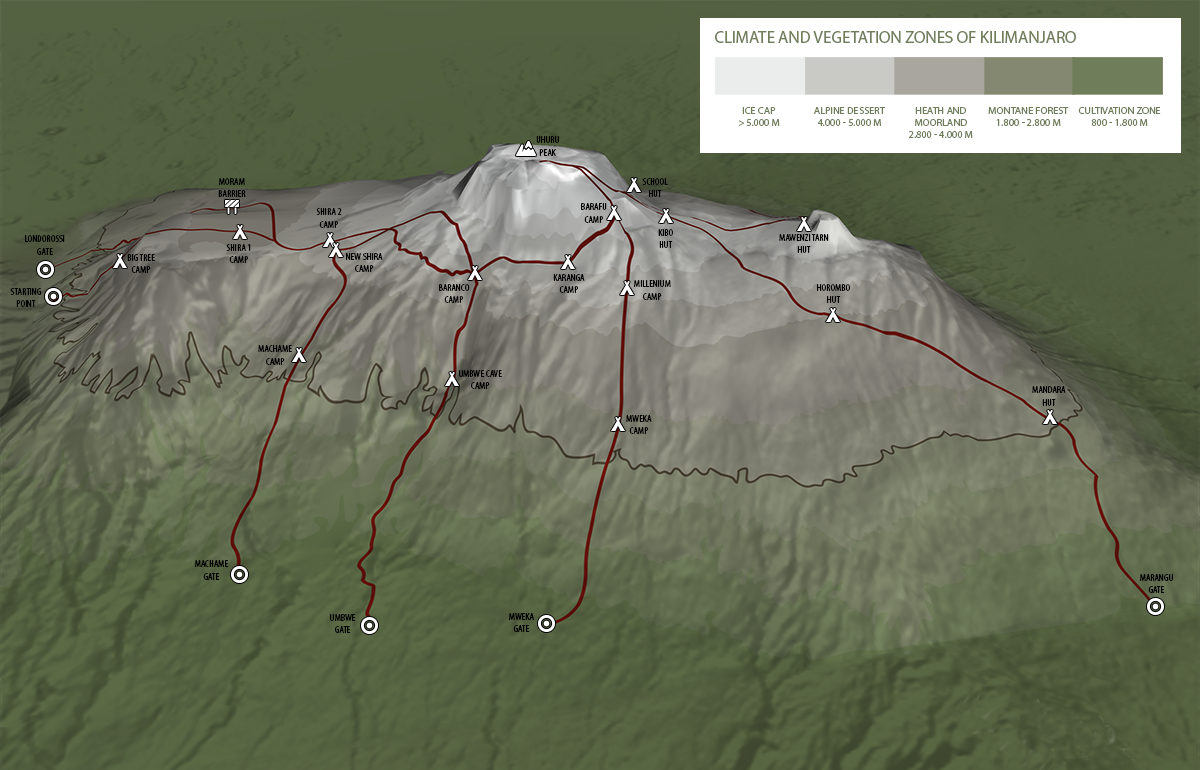Kilimanjaro Weather
Mt Kilimanjaro is large enough to create its own weather, so predicting the weather on the mountain can be tricky...
What is the weather like on Kilimanjaro?
The short answer is that the temperatures on Mount Kilimanjaro range from hot to bitter cold. The journey from the gate to the peak is like traveling from the equator to Antarctica in a matter of days. This is because the routes to the Uhuru peak cross different ecological zones. Mount Kilimanjaro has five major ecological zones, each approximately 3,280 feet (1,000 m) in altitude. Each zone is subject to a corresponding decrease in rainfall, temperature and life as the altitude increases.
The ‘trade’ and ‘anti-trade’ winds of Kilimanjaro
In one year there are two rain-bearing seasonal winds buffeting Kilimanjaro. The south-east trade wind bringing rain from the Indian Ocean arrives between March and May. Because the mountain is the first main obstacle to the wind’s progress, and by far the largest, a lot of rain falls on Kili at this time, and for this reason the March-to-May season is known as the long rains. This is the main wet season on Kilimanjaro. As the south-east trade winds run into the southern side of Kili, so the southern slopes tend to be damper and as a consequence more fertile, with the forest zone much broader than on the northern slopes.
Then there are the dry ‘anti-trade’ winds from the north-east which carry no rain and hit Kilimanjaro between May and October. These anti-trade winds, which blow, usually very strongly, across the Saddle (the broad valley between Kilimanjaro’s two peaks), also serve to keep the south-east trade winds off the upper reaches of Kilimanjaro, ensuring that the rain from the long monsoon season stays largely on the southern side below 3000m, with little falling above this.
This is why, at this time of year, the first day’s walk for trekkers following the Marangu, Umbwe or Machame routes is usually conducted under a canopy of cloud, while from the second day onwards they traditionally enjoy unadulterated sunshine.
A second seasonal rain-bearing wind, the north-east monsoon, having already lost much of its moisture after traveling overland for a longer period, brings a short rainy season between November and February. While the northern side receives most of the rain to fall in this season, it is far less than the rain brought by the south-east trade winds, and as a result the northern side of the mountain is far drier and more barren in appearance. Once again, the rain falls mainly below 3000m.
Kilimanjaro Map
There are several route options available. Look to get acquainted with the layout

